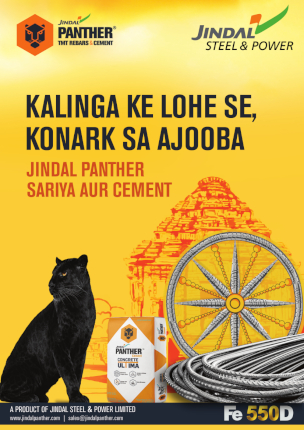Waste to Wealth through Recovering High Valued Metals from Industrial and Domestic Wastes

Prof. Dr. P. K. Jena
Minerals available in earth crust, have been playing a very significant role in industrialization and socio-economic developments of human society. All over the world, besides the increasing demand of iron & steel and aluminium, the need for non – ferrous metals and their alloys is also increasing rapidly. Unfortunately, the reserves of the minerals of most of these non-ferrous metals in India are very lean and complex in nature. India is endowed with good reserves of iron containing minerals like Haematite and Magnetite, Bauxite containing aluminium and some other precious minerals containing titanium, Zirconium and thorium. But, the reserves of minerals of some other most needed common non-ferrous metals like copper, zinc, lead, nickel, cobalt, tin and refractory metals like niobium, tantalum, tungsten, molybdenum and vanadium are very scanty.
In recent decades, the demand for above mentioned non – ferrous metals in India is increasing and most of these are being imported consuming a lot of foreign exchange. For example, the demand of zinc in the period 2000 – 2001 was 278000 tonnes and the production was only 161100 tonnes. Similarly, the demand of lead during the same financial year was 120200 tonnes while the production was 80100 tonnes. The demand for zinc and lead in India has grown at an annual rate of approximately 1% and 5% respectively during the 8th plan period. Similar is the situation for all non-ferrous metals. With the projected high demand of steel galvanized with zinc and automobile industry with automotive batteries with lead as major input, the requirement for zinc and lead in India is expected to grow rapidly during the years to come. The demand for copper is also increasing steadily with the application of the metal and its alloys in various industrial and domestic sectors. Copper smelting capacity of India is expected to maintain increasing trend as those for other countries in world. It was reported that, by the years 2000 – 2001, the indigenous copper production capacity was expected to increase from 2.47 lakh tones per annum (TPA) to 3.11 lakh TPA. Nickel is another strategic metal for development of its variouus alloys including stainless steel. Unfortunately, India has got very little reserves of nickel ore. The only nickel reserve is available in overburden of the chromite mines in Orissa containing only 0.8 to 1.3% nickel with 0.03% to 0.08% cobalt. At present, the entire annual requirements of 30,000 tonnes of nickel and 700 tonnes of cobalt are met through import of the corresponding raw materials, intermediates or final products.
In view of increasing demand of various non – ferrous metals, the import of those metals is increasing in recent years. For example, in the financial year 2018 – 19, the non ferrous metals import values in billion Indian rupees increased from 825.84 to 1030.34. It is reported that, India imports most of its non-ferrous metals and scraps from China, Germany and Italy. It is advisable to import the wastes like slags, leached residues of metal extraction plants containing non ferrous metals as well as scraps, electric arc furnace dust etc. from different countries with much less cost and utilize these to recover the required metals to meet the needs of the country.
India’s import value of non-ferrous metals was as high as 1.3 trillion Indian rupees in financial year 2021 – 2022 and it is expected to increase during the years to come unless we take above mentioned initiatives.
- Extraction of non – ferrous metal values from low grade & complex minerals:
A good number of lean and complex minerals containing some important non ferrous metals are available in India which can not be upgraded to a suitable concentration for extracting the metal values by conventional routes. Therefore, these minerals can be subjected to a number of chemical processes like selective chlorination, acid or alkali leaching with or without pretreatment, salt roasting followed by aqueous leaching etc. depending on the characteristics of the minerals to extract the metal values.
Some of the low grade and complex lean minerals include
- copper, nickel, cobalt, and manganese from Indian Ocean Pollymetallic nodules.
- Vanadium from lean vanadium bearing titaniferous magnetite containing less than 2% vanadium found in Orissa and Bihar.,
- Lateritic nickel ores containing 0.8 – 1.3% nickel and 0.03 – 0.08% cobalt found in chromite mines in the Sukinda area of Orissa.
b) Recovery of high valued non – ferrous metals from wastes and byproducts:
There is a great scope to recover various high valued non-ferrous metals like nickel, copper, vanadium, molybdenum, tungsten, niobium, tantalum etc. from leached residues, scraps, electric arc furnace dust etc. rejected from various metal extraction and fabrication units in the country as well as the imported ones. A list of some such wastes containing small amounts of non-ferrous metals are given below. Effort should be made to recover the metal values.
- Indian bauxite ore from which aluminium is produced contains about 0.05 to 0.1% oxides of vanadium.
- Stainless steel materials is cleaned by acid. The sludge contains 1.2 to 2.4% nickel, 3 to 5% chromium and 25 to 30% iron.
- Zinc when produced from its ore about 20%, a large amount of zinc is locked up in the waste mud (Moore Cake).
- While copper is produced from its ore by high temperature smelting and converting process, a lot of metals like nickel and cobalt are locked up in the slag (about 3.4% nickel and 1% cobalt).
- When tin is produced from its ore through high temperature treatment a slag rich in high valued niobium, tantalum, zirconium and titanium (7.6%, 1.33%, 16.6%, 4.8%, 2.7% oxides of niobium, tantalum, zirconium, titanium, tin respectively) is formed.
- In Electric Arc Furnace (EAF), while producing steel, the waste dust of the furnace contains a good amounts of zinc (10%), lead (2.7%) and cadmium (4.1%).
- Copper converter flue dust contains 4 – 6% copper, 20 – 25% lead, 10 – 16% zinc, 1 – 4% cadmium, and 5 – 8% arsenic.
- Metal values from Scraps like ferri-niobium scrap, lead-tin-bronze alloy scrap, zircaloy scrap etc.
- Recovery of high valued metals like palladium, platinum from spent catalytic converter.
- Nickel from Spent Hydrogenation Catalyst.
Efforts are being made by some of the respective industries in India to recover high valued non-ferrous metals from above mentioned wastes available in India as well as those imported from other countries. During the years to come many more such units should come up. In this way, it would be possible to meet our needs of various non-ferrous metals and their alloys. In this process, it would be possible to save a lot of foreign exchange for importing the required non-ferrous metals or their finished products.
In India due to availability of limited quantities of non ferrous common and refractory metals, it is desirable to develop techno-economically viable processes to extract these metals from lean and complex minerals available indigenously and from wastes. The existing metallurgical and allied industries generate lots of sludges, leached residues, slags, flue dust, scrap and spent catalysts in solid forms as well as in the form of liquid effluents as mentioned above. It is advisable to process all these wastes and also wastes imported from other countries to recover the high valued non – ferrous metals. It is also emphasized to scale up some of the indigenous processes for ultimate commercialization. It is desirable to develop and implement environment friendly technology while treating the lean minerals and industrial wastes. In this way India can be self reliant in meeting its requirements of various nonferrous metals while saving huge amounts of foreign exchange.
(The writer is former Director General, CSIR, India. He is presently serving as Chairman, Institute of Advance Technology & Environmental Studies (IATES). He can be reached at prof.pkjena_iates@yahoo.com






